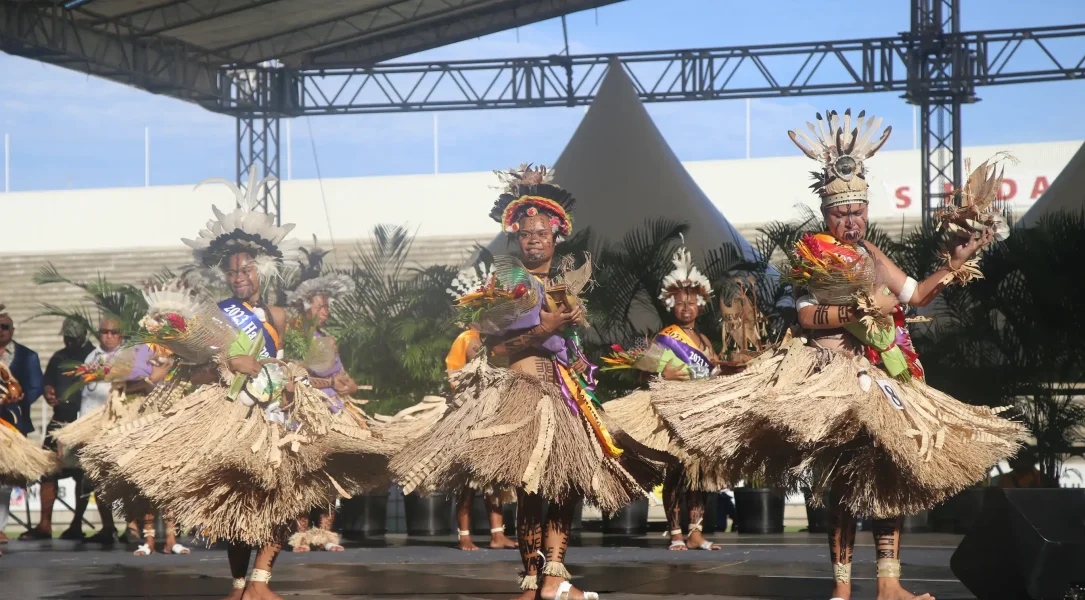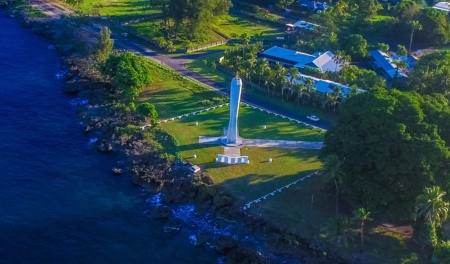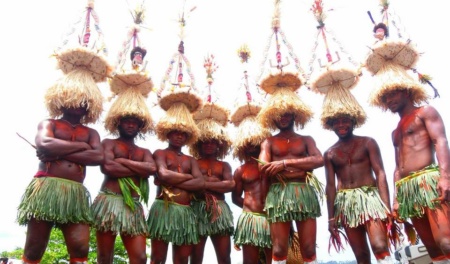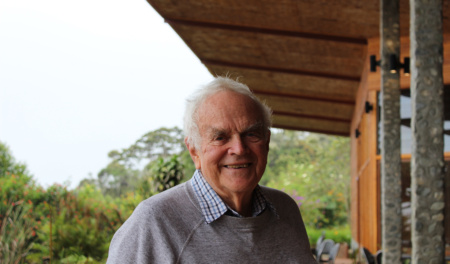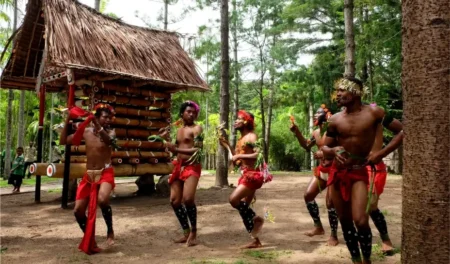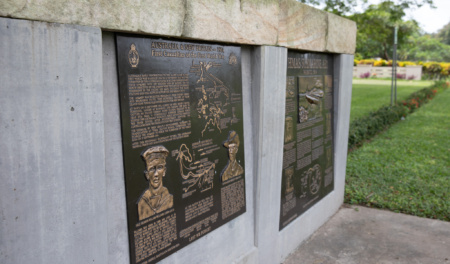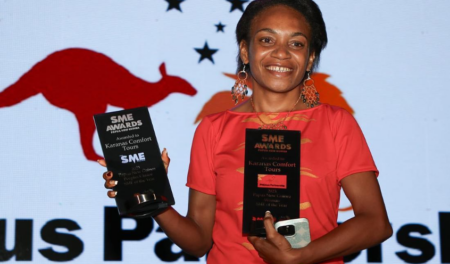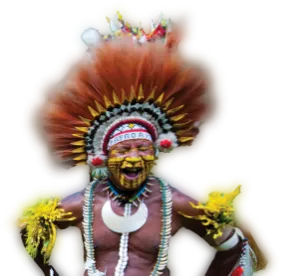Hiri Moale – An Ode to the Culture and History of the Motu-Koita People
By LaForce Mand
Experiencing a culture and tradition, different from one’s own, is an unparalleled thrill that most people go through life without experiencing. To bear witness and experience the history of a people’s old way of life, perfectly preserved through generations of practice and story-telling, is what fuels the human ability to hunger for adventure.
There are many ways in which one can witness various displays of PNG culture, be it through traditional “sing-sing” groups, history museums, arts and crafts markets, guided tours and many more. But to properly experience what exactly is a Papua New Guinean way-of-life and to understand the significance of a culture, you cannot simply spectate but participate.
Two such historical cultural experiences are the annual Hiri Moale festival and the Hiri Hanenamo beauty contest hosted in Port Moresby. This two-day festival provides an arena littered with cultural dances, string bands, local delicacies, and traditional re-enactments. This is a festival where one doesn’t simply witness but properly experiences a different culture.
1. HIRI MOALE FESTIVAL
The Hiri Moale festival is a cultural display and re-enactment of the traditional sea trading expeditions of the Motu-speaking people of Port Moresby. Many years ago, some of the Motu-speaking people would go on annual trading expeditions to the Gulf of Papua in massive sea-faring vessels called “lakatois”. There they would exchange with the inhabitants of that area clay pots, called “uro” and other valuables for sago and canoe logs. These expeditions were called “Hiri” and were not only spectacular in terms of the number, nature and size of the sailing craft involved and the cargoes they carried but also very important economically and in other ways to the Motuan people.
Apart from the re-enactment of the Hiri Trade, the festival is littered with various activities one can indulge themselves in. There is no shortage of entertainment as cultural dance groups do performances for festival goers to enjoy, in preparation for the arrival of the Lakatoi. These cultural dancing groups, of the Motu people, provide color and saturation to the festival.
Visitors can find themselves mesmerized by the synchronicity and flow of the various performances. The intricacy of the traditional attire is complimented by the rhythmic and hypnotic choreographed dance movements, while the whole performance is engulfed in the thumping beat of the “kundu” drum and a chorus of song caroled in the native Motu tongue.
Soon, the dancers and canoe racers give way for the main event of the day, the arrival of the lakatoi. As the sun slowly descends over the horizon, a large group of dancers assume formation in two long parallel lines from the base of the main stage to the edge of the sandy beach. This formation of dancers begins their traditional dance routine, like how it used to be during the early days of the trade, to welcome the arrival of the Lakatoi.
Young women dressed in traditional outfits, sing and sway their hips in rhythmic and alternating twists, causing their “grass skirts” to pivot in a hypnotic repeated motion. Young men pound their “kundu” drums, producing a melody for the entire dancing group to sing beautiful Motuan hymns. as the two lines of dancers navigate, and gyrate, up and down the beach front, without missing a step.
Momentarily the large sails of the incoming Lakatoi become visible in the golden sunset, as it inches nearer to the shore. Government Officials of Papua New Guinea, such as Ministers and Governors, join the Lakatoi’s welcoming party; this demonstrates just how significant the history of this trade was to the country’s old history. The welcoming party give a warm reception to the Lakatoi, as garden foods and livestock are then exchanged by the leaders and chiefs for all to see. Each Government Official is gifted with different garden foods and livestock to re-enact how goods brought back from the Hiri Trade was distributed to the village chiefs and leaders. The ceremony ends when all gifts have been exchanged, and slowly, while not letting a single note of their chorus slip, the parade of dancers perform their final exit dance as they make their way from the main arena.
The Legend
The first voyage took place when Edai Siabo, from the village of Boera was sailing home from a fishing trip when a great eel appeared and dragged him under the sea. The eel was the spirit of the sea. The eel returned Edai to the surface, then instructed him to build a great lakatoi (sailing canoe) fill it with cooking pots, and to sail westward, following the south-east tradewind called the laurabada (Motu language).
Obeying the spirit, he built the first hiri lakatoi, named it Bogebada (which means sea-eagle), loaded it with pots his wife MADE. He then sailed up the coast into the waters of the Gulf of Papua following the southwestern trade winds. There they traded Uros (clay pots) with Rabia (sago) and returned home when the wind direction changed.
Vanagi Canoe Race
The Vanagi Canoe Races are orchestrated by the festival’s sponsors and villagers, from all over Port Moresby and Central Province, to keep the crowd entertained for a portion of the festival while awaiting the arrival of the lakatois. Villagers build sailing canoes and race through a course mapped around the mouth of Ela Beach. Sailors race in two divisions, A Grade and B Grade, and the winners are awarded cash prizes. The A Grade’s route is longer than the B Grade’s. This leaves no shortage of entertainment for spectators.
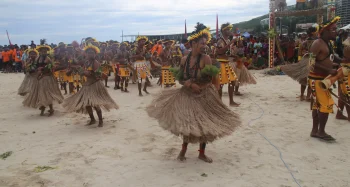
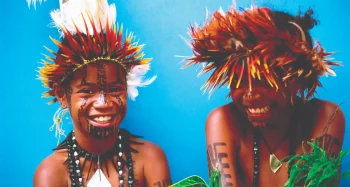
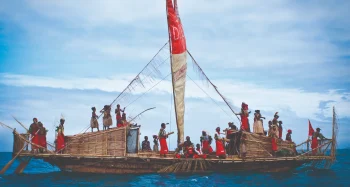

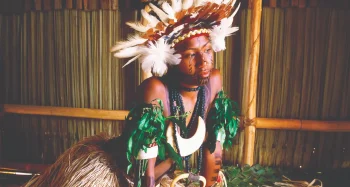
2. HIRI HANENAMO PAGEANT
The Hiri Hanenamo contest is a traditional pageant where young women from villages in the Motu Koitabu region, aged between 18 and 25 years, dress in their traditional attire, and contest to be crowned the Hiri Hanenamo Queen. A pageant may be deemed as a modern concept by some, but the ideology and principles of the contest bear roots dating back to the very first hiri voyage.
In fact, the first original Hiri Hanenamo was the wife of Edai Siabo, the pioneer of the hiri trade many years ago. Her commitment and dedication to the rituals vital to ensuring a successful hiri trade voyage deemed her worthy of the inaugural tittle of Hiri Hanenamo.
The term “hanenamo” is a Motuan word whose translation means a young woman who displays upright manner, behavior, and attitude and whose character is deserving of such a tittle. To be deemed hanenamo, a woman must observe and pay due diligence to the rules, norms, and laws of her society and she must bring happiness to her family. It is from these traditional concepts which the Hiri Hanenamo contest derives most of its key values.
Hiri Hanenamo is not attributed to beauty alone, though it is one aspect of being a Hiri queen, it is also a prerequisite of being able to possess an amount of elegance and grace in carrying out duties and their performances are also considered. Many components of village life are also taken into consideration by the judges, including authentic tattoo designs, body decorations and ornaments relating to the contestant’s village.
Contestants undertake a series of accomplished traditional dancing, not only in the presence of a judging panel but in front of their village leaders, chiefs, and hundreds of spectators. The dance routine in itself is a master piece mixture, of movement, sounds, and visuals. The delicate hips swings are complimented by the carefully fashioned traditional attire, as each movement sends life to every element if the attire. The contestants sing native Motuan hymns and songs, with the most delicate pitch, accompanied by the beat of the kundu drums. Each contestants performance is a spectacle that cannot be done justice in the prison of a photograph, or the shallowness of a written article. To truly grasp the beauty of the contest, the minimum requirement is to be sitting in the crowds.
The tittle of Hiri Hanenamo queen, for the year 2023, was awarded to the beautiful Miss Kinmjosh Damuri of Tubusereia village. It was no simple task selecting a winner from the eight contestants. However, Miss Damuri’s elegance, grace, and representation of cultural values made her stand out from the other contestants. After being crowned the 2023 Hiri Hanenamo queen, Miss Damuri acknowledged her fellow contestants reinforcing that they were all winners, and all were ambassadors of their history and culture.
Apart from the prestigious Hiri Hanenamo crown, other special category awards were given, such as:
- Best traditional attire: Miss Margareth Winnie
- Best cultural knowledge: Miss Quanika Gaudi
- Best koe (sway): Miss Hevari Agalu.
- Another special category, Miss Hetura (friendship), was chosen by the contestants themselves and awarded to Miss Ray Arere from Kouderika village.

